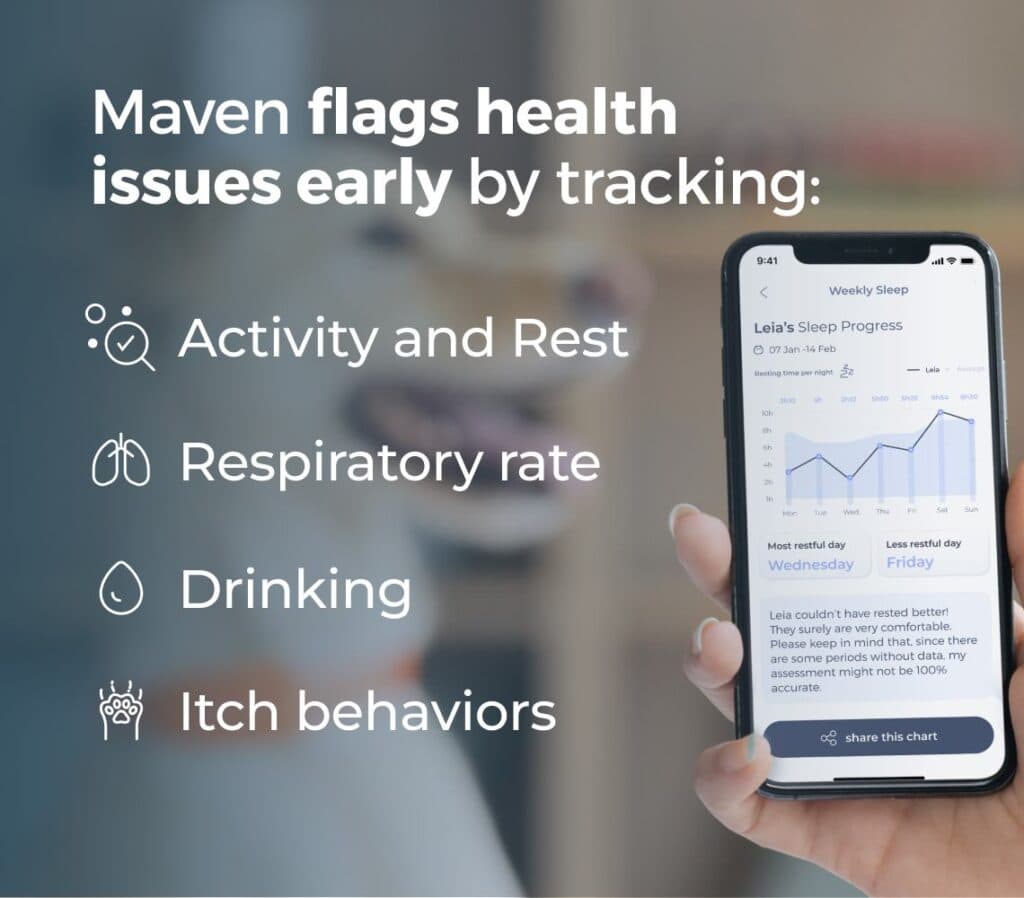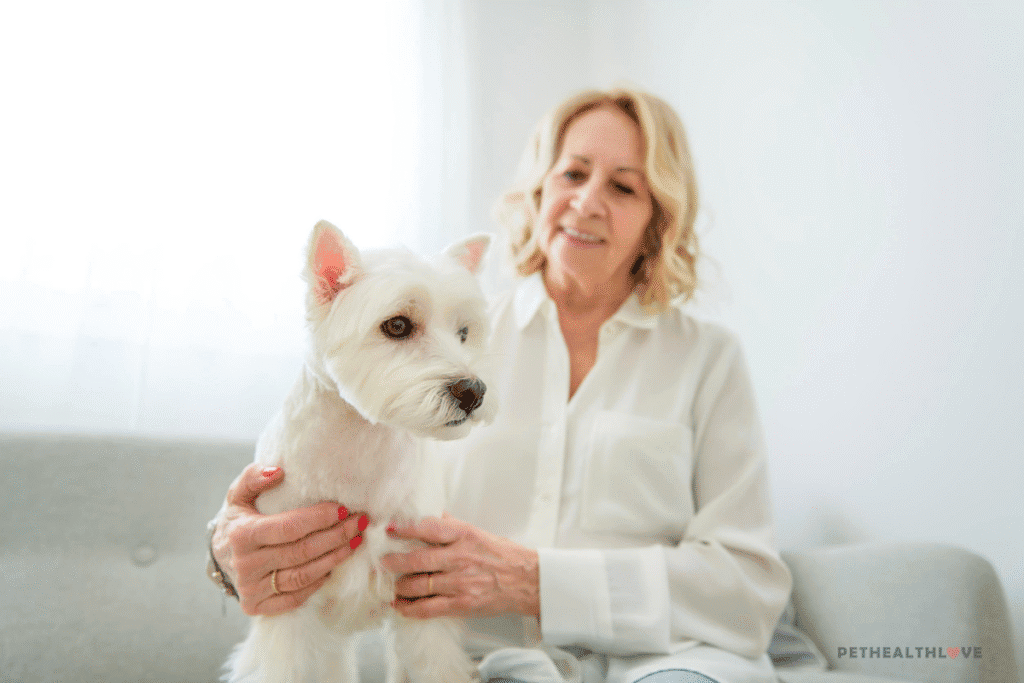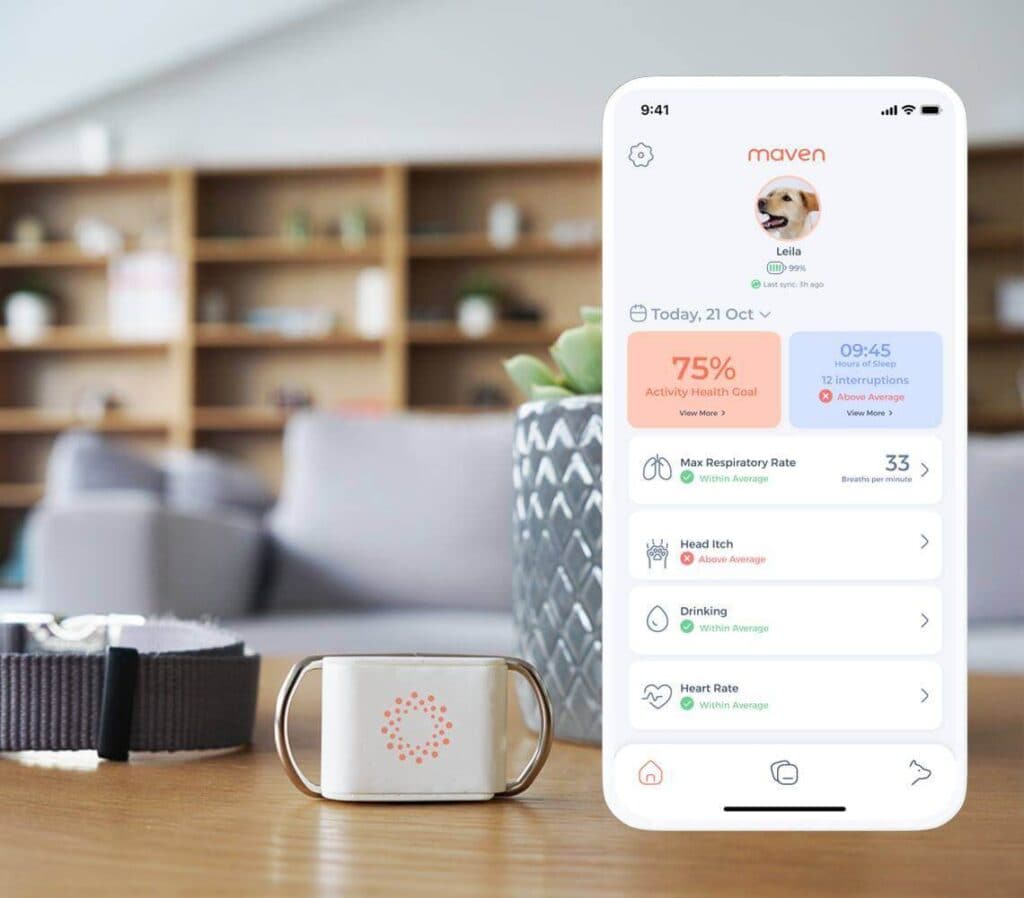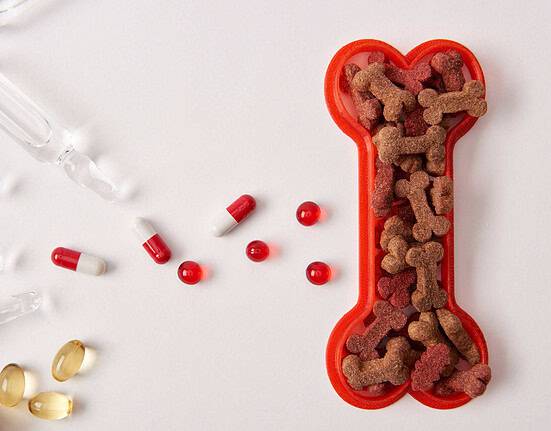Last updated on September 7th, 2025 at 02:42 pm
Our dogs can’t tell us when something feels “off,” so it’s up to us to notice the subtle changes. What may seem like a minor shift in behavior or routine could actually signal something more serious under the surface.
KEY TAKEAWAYS
- Dogs often hide pain — Even subtle or short-lived signs (like a skipped meal or extra nap) can signal serious underlying health issues.
- Watch for these silent danger signs: a sudden drop in energy, changes in eating or drinking habits, limping or favoring a leg, coughing/gagging/reverse sneezing, or behavior changes such as becoming unusually clingy, distant, or just “not themselves.”
- Early detection saves lives — Recognizing these small shifts early can lead to more effective treatment and a better outcome for your pup.
- Track patterns over time — Using tools like dog health trackers helps spot gradual changes before they become obvious — and before it’s too late.
As pet parents, it’s easy to overlook little things — a skipped meal, extra naps, a weird cough — especially if they come and go. But even small signs can be early warnings that your pup needs a vet visit.
Let’s break down five red flags that dog parents like you should never ignore — and how a dog health tracker can help you spot them sooner.
1. A Sudden Drop in Energy
Is your usually playful pup suddenly snoozing through fetch?
While dogs love naps, a noticeable drop in energy — especially in a dog that’s normally active — can signal more than just a lazy day.
⚠️ What it could mean:
- Infections or fevers
- Heart disease
- Pain (especially from arthritis or injury)
- Early signs of diabetes
📌 Tip from Maven Pet: The Maven Pet Health Monitor continuously tracks your dog’s activity, making it easier to spot gradual decreases you might miss day to day. Even subtle shifts in movement can be the first sign of discomfort or fatigue.
2. Changes in Eating or Drinking Habits
Skipped a meal? Drinking more or less than usual?
One missed meal may be no big deal — but don’t brush it off if it happens again.
🚨 Why it matters:
- Increased water intake may point to kidney issues, diabetes, or Cushing’s disease
- Decreased appetite can signal anything from dental pain to digestive upset like vomiting and diarrhea, or even cancer
🍽️ Watch for:
- Sudden weight changes
- Food avoidance
- Gulping water constantly or not drinking much at all
📌 Tip from Maven Pet: For dogs, Maven tracks water intake patterns over time — making it easier to detect when drinking behavior changes, even gradually.
3. Limping or Favoring a Leg
Is your dog walking “funny” or avoiding stairs?
Dogs are masters at hiding pain. Limping — even a slight one — usually means they’re hurting.
🔍 Common causes:
- Sprains, torn ligaments, or muscle injuries
- Joint issues like arthritis or hip dysplasia
- Paw injuries (splinters, cuts, or cracked pads)
🐾 Quick check: Gently examine your dog’s paw and leg for swelling, tenderness, or cuts. If nothing obvious shows and the limp persists, it’s best to schedule a vet exam.
📌 Tip from Maven Pet: By monitoring your dog’s daily activity and rest levels, Maven’s pet health app can help you catch subtle changes in movement or reluctance to be active — often before limping becomes obvious.
4. Coughing, Gagging, or Reverse Sneezing
Is your dog making strange throat noises or hacking like they’re clearing something?
It might just be post-nasal drip… or it could be something more.
😬 Possible causes:
- Kennel cough (highly contagious)
- Collapsing trachea (common in small breeds)
- Heart or lung disease
Pro tip: Try to record the sound on your phone — it can really help your vet figure out what’s going on.
📌 Tip from Maven Pet: Maven tracks your dog’s resting respiratory rate, which is often one of the first things to change in cases of respiratory or cardiac conditions — long before symptoms like coughing become severe.
5. Behavior Changes — Even Subtle Ones
Has your sweet pup suddenly become clingy… or distant?
Mood shifts — like hiding, growling, or seeming anxious — can be your dog’s way of saying “something’s not right.”
🧠 This could be due to:
- Pain or discomfort
- Cognitive decline (especially in senior dogs)
- Neurological issues
📌 Tip from Maven Pet: Sleep disruptions, changes in daily activity, and increased itch behaviors are common signs of discomfort — and all are tracked automatically by Maven, so you can spot changes over time and bring them to your vet’s attention sooner.
When in Doubt, Don’t Wait It Out
Dogs often suffer in silence. That’s why noticing and acting on these “small” red flags can be lifesaving. Catching issues early often means easier treatment and a better outcome.
💡 Want help spotting the early signs of trouble?
With the Maven Pet Health Monitor, pet parents get daily, real-time insights into their dog’s activity, sleep, resting respiratory rate, itch behaviors, and — for dogs only — heart rate and water intake. It’s like a window into your dog’s health, between vet visits.
Final Thoughts
Even the tiniest change in your dog’s routine or behavior deserves attention. What seems like “no big deal” today could be the clue that saves their life tomorrow.
Stay curious. Stay observant. And when in doubt, don’t wait it out.
Because small signs are still signs — and your dog is counting on you to notice.
ABOUT THE GUEST AUTHOR
Carolina Domingues, DVM is a veterinarian with a Master’s in Veterinary Medicine from ICBAS – University of Porto. A lifelong animal lover, she leads clinical research at Maven Pet and reviews all pet health content to ensure the guidance we share is accurate, trustworthy, and always in your pet’s best interest.



















Leave feedback about this